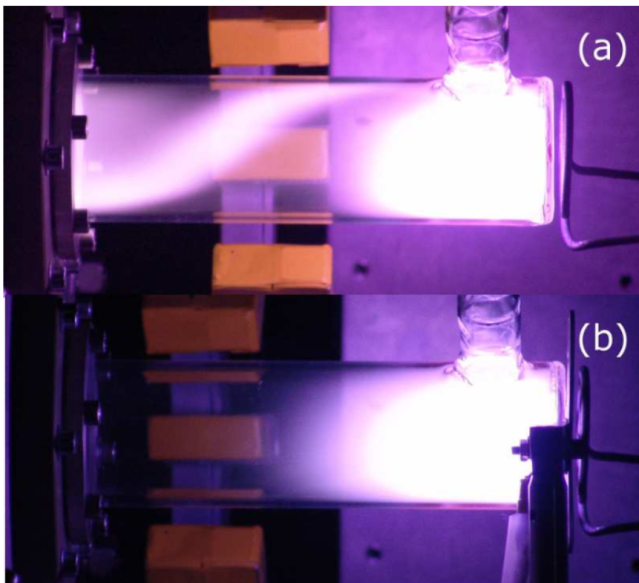
Paper under review Review of Plasma drift in a low-pressure magnetized radio frequency discharge.
Authors – D Gerst, S Cuynet, M Cirisan and S Mazouffre
Date: February 2013
First Published in Plasma Sources Science and Technology 22(1)
Relevant markets
Energy – Plasma Fusion
Travel – Space Plasma Engines
General – Plasma Measurement
A growing opportunity for plasma is the development of fusion devices. As the technology is not a chemical process but a nuclear process, these devices are thermal plasma in that the electrons and ions are both hot, very hot. The sun is a fusion plasma and derives its power from fusion reactions. Earthbound plasma has to be much hotter than the Sun because of the fusion reaction scales as the product of the temperature, density and confinement time of the particles. The size of the Sun makes the density and confinement higher. In Fusion devices, magnetic fields are used to confine the plasma and maintain its high temperature.
In order to heat Fusion plasma and increase fusion power, a particle beam can be fired into the plasma but because of the magnetic fields, the particles have to be neutral to get through the confinement fields. The beam starts life in an ion source and is accelerated to high energies and then converted from charge particles to neutral particles. It is much easier to convert negative ions rather than positive ions, to neutral particles, especially at high energies. So a source of negative ions is an important technology for many Fusion devices. Understanding negative ion sources will become very important if negatives ions are required to heat future plasma fusion devices on a large scale.
As is often the case, one technology can often lead to new applications. Ion sources are also used to provide thrusters for space applications. A major problem with ion thrusters is that the beam is charged and a current flows. This current charges up the spacecraft or satellite. This can cause a lot of problems. To avoid this problem we can use a plasma beam that contains both positive ions and negative ions. This beam has a net current of zero and avoids the beam charge up.
Plasma thrusters offer the best technology solution for space travel but then we already know that from listening to Scotty. To create and separate negative ions in a plasma is very complex and it requires a deep understanding of the interaction of charged particles in the plasma with the magnetic and electrical fields inside the ion source. The paper we are reviewing uses a Langmuir probe to measure and understand plasma inside a negative ion source. The Langmuir probe measures electron density, ion density, electron temperature as well as plasma potential. These measurements help the authors to resolve what is happening inside the ion source and enables them to understand the key processes and suggest improvements that can make the technology more viable.
The plasma is generated with a radio frequency source which is inductively coupled into the plasma, a shield is used to remove the electrical field and only couple the magnetic field. This is similar to technology for wireless battery charges under development. The coupling of only the magnetic field reduces what is called capacitive coupling. The presence of RF fields in the plasma introduces issues that make the Langmuir measurement and analysis more complicated. As well as an RF magnetic field the ion source also has a continuous magnetic field used to filter the ions and electrons. This is a key component of the ion source.
The authors show that when the shield is placed in the coupling circuit the RF plasma potential drops from 181 Volts to just 45 Volts. This confirms that the shield is doing its job as expected. The authors’ measure plasma density and temperature along the magnetic filter which enables them to derive a theory of operation that can be used to explain the operation of the source and understand what is happening, it also allows them to design better solutions and to scale the source. They were able to conclude that the bright plasma strip located at the magnetic field originates in the transverse drift of the electron fluid that is intercepted by the dielectric walls of the discharge tube. In other words, the drift does not form a closed loop in this situation, contrary to what is realized in Hall Effect thrusters. So previous learning in positive ion thrusters does not apply to this new type of plasma thruster.

Plasma without shield a) and with shield b) The magnets are in brown/orange placed around the tube. The plasma cools and does not glow inside the magnetic field (strip) with the shield in place. The shield is to the right of the glow and is placed in front of the spiral inductive coil.
To conclude, as a result of their plasma measurements and the detailed theory developed and tested the Scientists can now understand the impact of the filter magnetic field on plasma beam uniformity and ion formation efficiency. They are better able to predict performance in other geometries to allow them to design more efficient and larger scale systems in the future so that mankind can go where no one has gone before!